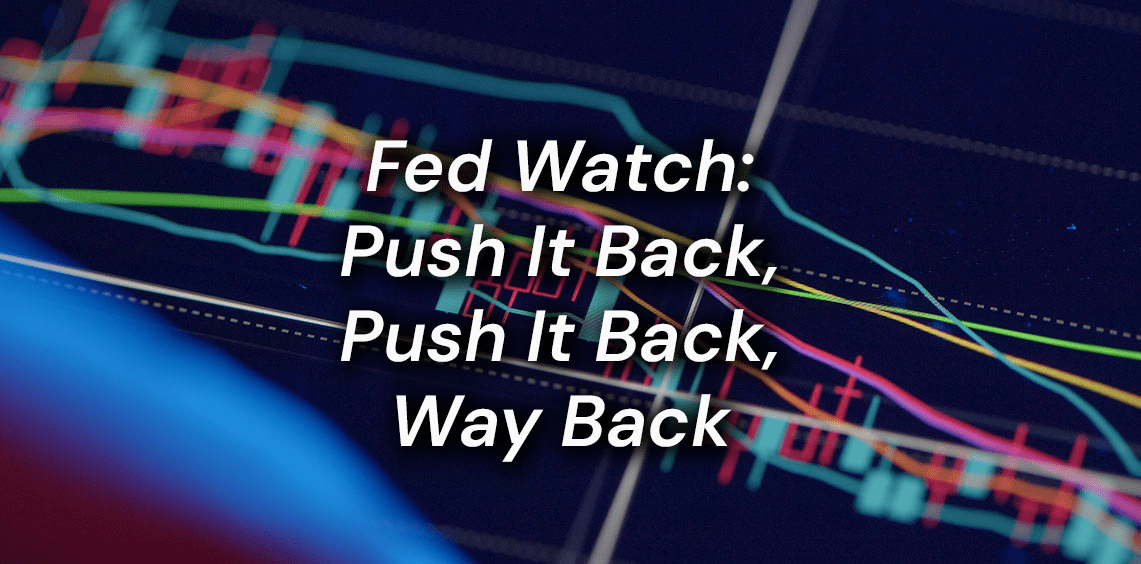We had two big developments last week: the employment report on Friday and the Fed meeting.
Let’s start with jobs because this could be the key data that needs to turn negative to convince Jerome Powell to lower rates. And the jobs data generally came in hot and ahead of expectations Friday.
While the current month beat the estimates, there were 75,000 negative revisions for both March and February, which brings the three-month job growth lower than expected.
These downward revisions somewhat help alleviate the dismal productivity figures that came in earlier in the week—with a 2% drop for the first quarter. I have been hoping productivity would rebound and help avert a recession this year, i.e, expecting negative employment trends but productivity gains to offset that, boosting GDP. Over the last 3 years, we’ve seen some of the lowest productivity numbers in history, which is both disappointing and puzzling.
The unemployment rate sank to 3.4% tying a multi-decade low, while wages were higher than expectations.
My bottom line: the bar is very high for raising rates again in June. I think you need much more than this hot jobs number and wage growth. We will get another employment report before the June meeting, which would have to be much stronger than expected. We have the inflation report this week and interestingly, another inflation report the day the June Fed meeting begins. We would have to get three really hot data prints for the Fed to hike rates again in June, in my opinion.
The bar is also high to reduce rates, but I do think that will happen later this year. What it will take to cut in my view is, as I mentioned above, negative payroll numbers. Job declines will open eyes and hit the headlines. We are getting into the political season and the pressure on the Fed not to be overly tight will increase dramatically if we get a string of negative payroll reports and a jump in the unemployment rate.
In the summer and fall months, I expect to see these declines. The initial disturbances from the Silicon Valley Bank (SVB) and Signature Bank failures did not have any meaningful effect in the April data. We don’t really know whether the problems of First Republic and other west coast banks will be more substantial. Some at the Fed believe the tightness in bank lending standards is equivalent to a single hike. I believe the lending contraction will be constrictive and equivalent to at least 2-3 and maybe even 4 hikes.
Capital spending already has been depressed. Investment spending is down. Housing may be stabilizing at a lower level. But with mortgage rates being elevated, housing will remain soft.
Can the consumer keep spending? If you take a look at consumer savings and liquidity, when they have to start borrowing from credit cards or home equity loans, which are pegged to the short-term rates, they will feel the pinch of higher rates.
Earnings reports are coming in fairly good—nothing nearly as bad as Q4 2022. But these earnings figures are all rear-view mirror from January, February, and March. Almost all of earnings came in before the SVB failure. Outlooks and guidance for the rest of year are coming in mixed—with some companies raising guidance and some pointing to slowdowns.
Earnings resilience is encouraging the market. But the market surged Friday because the jobs data says the recession clock is still a ways off. It very well might be starting now with an upward creep of the jobless claims. We will see what the coming weeks bring.
Past performance is not indicative of future results. You cannot invest in an index.
Professor Jeremy Siegel is a Senior Investment Strategy Advisor to WisdomTree Investments, Inc. and WisdomTree Asset Management, Inc. This material contains the current research and opinions of Professor Siegel, which are subject to change, and should not be considered or interpreted as a recommendation to participate in any particular trading strategy, or deemed to be an offer or sale of any investment product and it should not be relied on as such. The user of this information assumes the entire risk of any use made of the information provided herein. Unless expressly stated otherwise the opinions, interpretations or findings expressed herein do not necessarily represent the views of WisdomTree or any of its affiliates.






